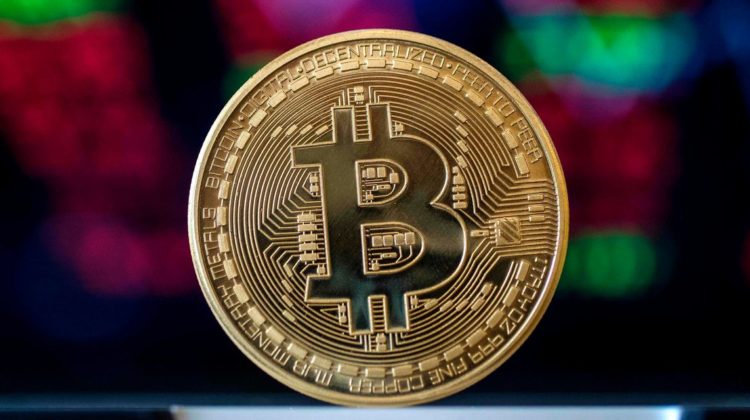
Ho, ho, HO-DL! That is what the bitcoin faithful must be thinking—referring to digital-asset investors’ knack for holding on to, or HODL-ing, bitcoins through the ups and downs—during particularly buoyant holiday trade for the world’s No.1 digital currency.
Bitcoin prices were shattering records during the Christmas weekend as investors looked toward closing out a historic 2020 for the world’s most prominent cryptocurrency, amid a global pandemic.
A single bitcoin was briefly trading at a record above $27,000, at last check Sunday afternoon on CoinDesk, after marking a historic peak at around $25,000 around the Christmas trading period. Bitcoin
BTCUSD,
trade never sleeps.
Bitcoin prices have gained more than 276% so far in 2020. By comparison, the Dow Jones Industrial Average
DJIA,
has risen nearly 6% in 2020, the S&P 500 index
SPX,
has gained nearly 15%, while the Nasdaq Composite Index
COMP,
has climbed almost 43% year to date.
Fanatics of the virtual coin point to the growing attention from institutional investors and mainstream companies, which now either view the decentralized currency as a legitimate asset, or at least a potential hedge against valuations in other parts of financial markets, including the U.S. dollar.
Indeed, bitcoin’s skyrocketing prices, after an epic decline three years ago, comes as the U.S. dollar has been staging a steady retreat that some attribute to the belief that one day digital assets will replace fiat currencies like bucks. Bitcoin is viewed by many as a hedge against the devaluation of dollars, which was part of its genesis in 2009, in the wake of the economic carnage wrought by the 2008 financial crisis.
Naysayers warn that bitcoin is a technologic innovation underpinned by thin air and is likely to be regulated out of existence at some point if it doesn’t collapse on its accord.
However, that hasn’t stopped enthusiasts from declaring the current bitcoin rally as just the start of a more profound shift in financial markets.
PayPal
PYPL,
recently allowed users on its platform to purchase bitcoin, as well as other sister cryptos like ethereum
ETHUSD,
Bitcoin Cash
BCHUSD,
and Litecoin
LTCUSD,
Square’s
SQ,
popular Cash App also allows users to buy and sell bitcoins.
On Saturday, Tim Draper, a startup investor who made his name in Silicon Valley for successful investments in companies like Skype and Twitter Inc.
TWTR,
and some notable unsuccessful investments in Theranos, forecast, via a tweet, that bitcoin prices would see a 10X growth from current levels by 2022 or 2023.
The trillions thus far spent by governments and central banks to combat the economic crisis brought about by COVID-19 also has been seen as a support for the ascent of digital asset like bitcoin.
One of the more tantalizing questions that has cropped up in financial markets is one of portfolio modeling: Does bitcoin fit in an average investor’s portfolio, and if so, at what proportion?
The truth is no one really knows.
Many advisers suggest that only those with the financial wherewithal to withstand a substantial loss should even consider dabbling in digital assets. And even then, bitcoin is viewed as an asset that should make up a small portion, between 1% to 5% of an overall portfolio.
Read: Opinion: Why the only place you should invest in bitcoin is in your IRA
“While I am not sure what to make of this parabolic move in bitcoin (when speaking with individuals I’ve been of the view that bitcoin can have a small role in your portfolio, though it should be treated as highly speculative and not a currency),” wrote Peter Tchir, head of market strategy at Academy Securities, in a weekend research note.
He added that bitcoin’s move, as with many assets in financial markets, could be rising due to superlow interest rates and the fear of missing out, or FOMO, with investors driving up the price of an asset that they have not been early adopters of.
The researcher also said individual investors, using popular investing apps like Robinhood, could be behind bitcoin’s rally, making gains similarly vulnerable to a major pullback as was observed in 2017, when the asset knocked on the door of trade at $20,000 only to plunge to a low around $3,000 before beginning a plodding 36-month rise.
“Or, maybe, people view that the ‘Robinhood’ traders have moved their day trading, option fueled speculation to bitcoin (which given the number of ads I get on ‘parlaying’ sports bets, shouldn’t be discounted),” Tchir wrote.
At its core, bitcoin is a software tool that allows anyone to memorialize transactions on an immutable digital ledger. So-called bitcoin miners solve complex puzzles or cryptograms that require an outsize expenditure of computing power and help to confirm transactions, and miners are in turn rewarded with bitcoins for that effort.
This technology prevents double spending, in theory, and anonymizes users, which is why critics argue that its primary use is for money laundering and corruption.
In its nascence, a single bitcoin was worth a fraction of a cent, but its moves have been stratospheric over the past 11 years, as demand has surged from both mainstream users and new corporate and individual entrants, who make the case that a revolution in financial markets is at hand.
